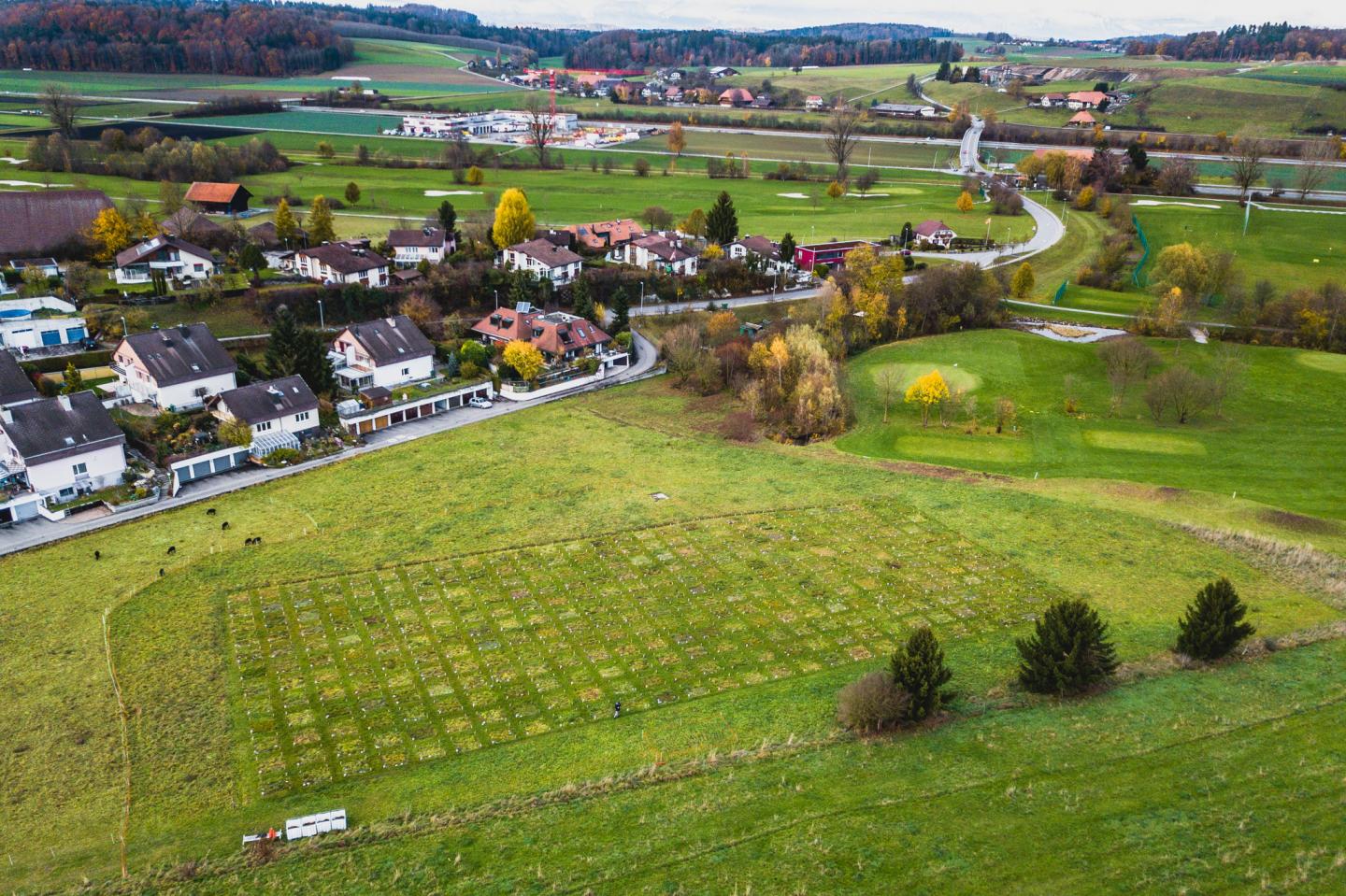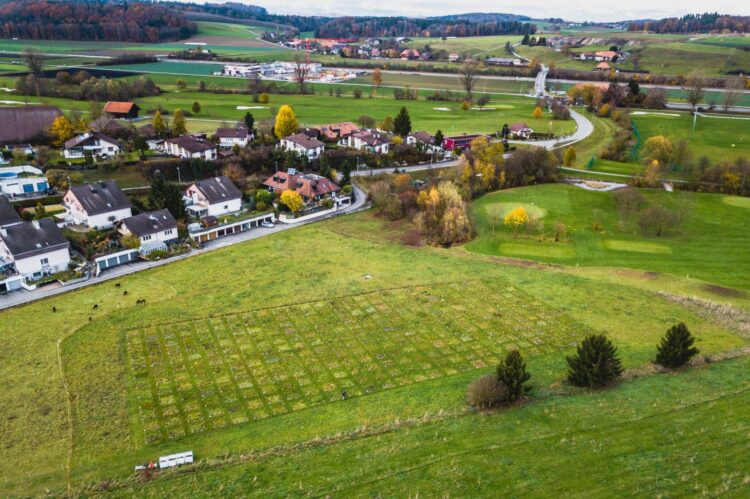
Credit: © H. Vincent
Virtually all of the grasslands in Europe are managed by farmers and whilst traditional management involved periodic cutting and grazing, modern intensive management involves applications of large amounts of nitrogen fertiliser to increase grass production. Traditionally managed grasslands contained many plant species, but intensively managed ones contain only a few fast-growing ones that profit from the high nutrient levels. The number of disease-causing plant pathogens also increases with fertilisation. All of these changes are occurring simultaneously; however, ecologists do not know which are most important or what happens when several change at the same time.
The PaNDiv (Pathogens, Nitrogen and Diversity) experiment of the Institute of Plant Sciences at the University of Bern is unique because it manipulates many of these factors to see how they interact with each other. In their first article, “Decomposition disentangled” the authors focussed on litter decomposition, i.e. the speed at which plant matter rots down, which is critical for maintaining a healthy and fertile soil.
More than 800 nylon bags
“Nitrogen shifted the plant community towards more fast-growing plant species and this in turn made the leaves decompose faster (feeding back more nitrogen to the soil). This indicates that fertilisation effects on functioning are underestimated if we don’t consider the changes in species composition”, explains Dr. Noémie Pichon, first author of the study. Litter from fast growing plants decomposes faster because fast growing species invest less in structural tissue and build thinner larger leaves with higher nitrogen content, which are efficient at capturing light but which don’t live long. These leaves rot down faster than the small thick leaves produced by slow growing plants. Small nylon bags were filled with litter and left to decompose on each plot to test how fast the biomass produced breaks down. “We ended up sewing more than 800 bags with a sewing machine, but the quality of the results was worth the amount of work” continues Dr. Pichon.
Testing different factors at the same time
Eric Allan, project leader and professor at the Institute of Plant Sciences, says: “The results of our first study show why this kind of experiment is needed: understanding ecosystem functioning is complicated and only by testing many different factors at the same time can we understand their importance and therefore predict how our ecosystems will change in the future”.
Several experiments have shown that ecosystems with more plant species have higher levels of ecosystem functioning. However, the PaNDiv experiment is unique because it not only manipulates plant diversity, on small plots of 2 x 2m, but also varies the type of plant species present. This is done by creating plant communities consisting of only fast-growing plants (which thrive in fertile soil) or only slow growing plants (that prosper in poorer conditions). It also combines these treatments with nitrogen fertilisation and the application of fungicide to remove plant pathogens. On each plot, the researchers measured several ecosystem functions. These included: how much plant matter they produced; how active the soil organisms were; the levels of nutrients and carbon in the soil; as well as the number of insects and plant pathogens present. The PaNDiv experiment is located in the small Swiss town of Münchenbuchsee, near the capital Bern. Pichon et al. 2020 is the first article of a long series that will be published using PaNDiv results.
###
Media Contact
Dr. Noémie Pichon
[email protected]
Original Source
https:/
Related Journal Article
http://dx.





